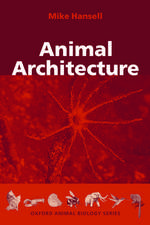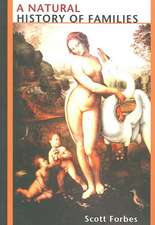The Handicap Principle: A Missing Piece of Darwin's Puzzle
Autor Amotz Zahavi, Avishag Zahavien Limba Engleză Paperback – 7 oct 1999
Preț: 145.48 lei
Preț vechi: 155.24 lei
-6% Nou
Puncte Express: 218
Preț estimativ în valută:
27.84€ • 28.72$ • 23.56£
27.84€ • 28.72$ • 23.56£
Carte tipărită la comandă
Livrare economică 22-28 februarie
Preluare comenzi: 021 569.72.76
Specificații
ISBN-13: 9780195129144
ISBN-10: 0195129148
Pagini: 304
Ilustrații: numerous line drawings
Dimensiuni: 233 x 155 x 21 mm
Greutate: 0.44 kg
Ediția:Revised
Editura: Oxford University Press
Colecția OUP USA
Locul publicării:New York, United States
ISBN-10: 0195129148
Pagini: 304
Ilustrații: numerous line drawings
Dimensiuni: 233 x 155 x 21 mm
Greutate: 0.44 kg
Ediția:Revised
Editura: Oxford University Press
Colecția OUP USA
Locul publicării:New York, United States
Recenzii
"Among the most revolutionary and controversial concepts in modern behavioral biology is the handicap principle developed by Zahavi. After initially encountering resistance, it has been receiving increased acceptance for its success in explaining an enormous variety of animal behaviors and anatomical structures, from gazelles' seemingly suicidal displays to men's beards. Read this fine book, and discover what the excitement is all about!"--Jared M. Diamond, Professor of Physiology, University of California at Los Angeles
"This fascinating, provocative, insightful and controversial book will charm, inform and sometimes infuriate all of those interested in understanding animal and human communication."--Paul Ekman, Professor of Psychology, University of California, San Francisco
"By now the Handicap Principle is acknowledged by a growing body of biologists, and by joining their forces Amotz and Avishang Zahavi explain the principle and how it applies to communicative behaviour between organisms...from amebas to humans."--Arne Lundberg, Uppsala University, Sweden
"[An] extremely well-written popularization of the authors' scientific work. Covering species as different as tigers and barn swallows, and topics as diverse as parasitism and parental care, the authors apply their theory to many aspects of animal behavior that were difficult to explain previously.... Highly recommended."--Booklist
"This book is highly readable yet rigorous enough for specialists. Essential for any academic collection and worthwhile for genearal collections."--Library Journal
"The Zahavis write well, with admirable clarity...Very readable book"--Science Books and Films
"This fascinating, provocative, insightful and controversial book will charm, inform and sometimes infuriate all of those interested in understanding animal and human communication."--Paul Ekman, Professor of Psychology, University of California, San Francisco
"By now the Handicap Principle is acknowledged by a growing body of biologists, and by joining their forces Amotz and Avishang Zahavi explain the principle and how it applies to communicative behaviour between organisms...from amebas to humans."--Arne Lundberg, Uppsala University, Sweden
"[An] extremely well-written popularization of the authors' scientific work. Covering species as different as tigers and barn swallows, and topics as diverse as parasitism and parental care, the authors apply their theory to many aspects of animal behavior that were difficult to explain previously.... Highly recommended."--Booklist
"This book is highly readable yet rigorous enough for specialists. Essential for any academic collection and worthwhile for genearal collections."--Library Journal
"The Zahavis write well, with admirable clarity...Very readable book"--Science Books and Films


















